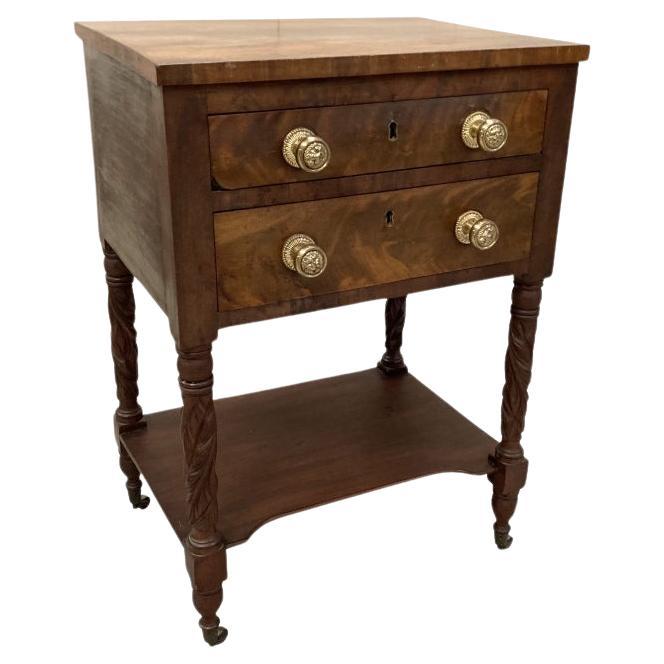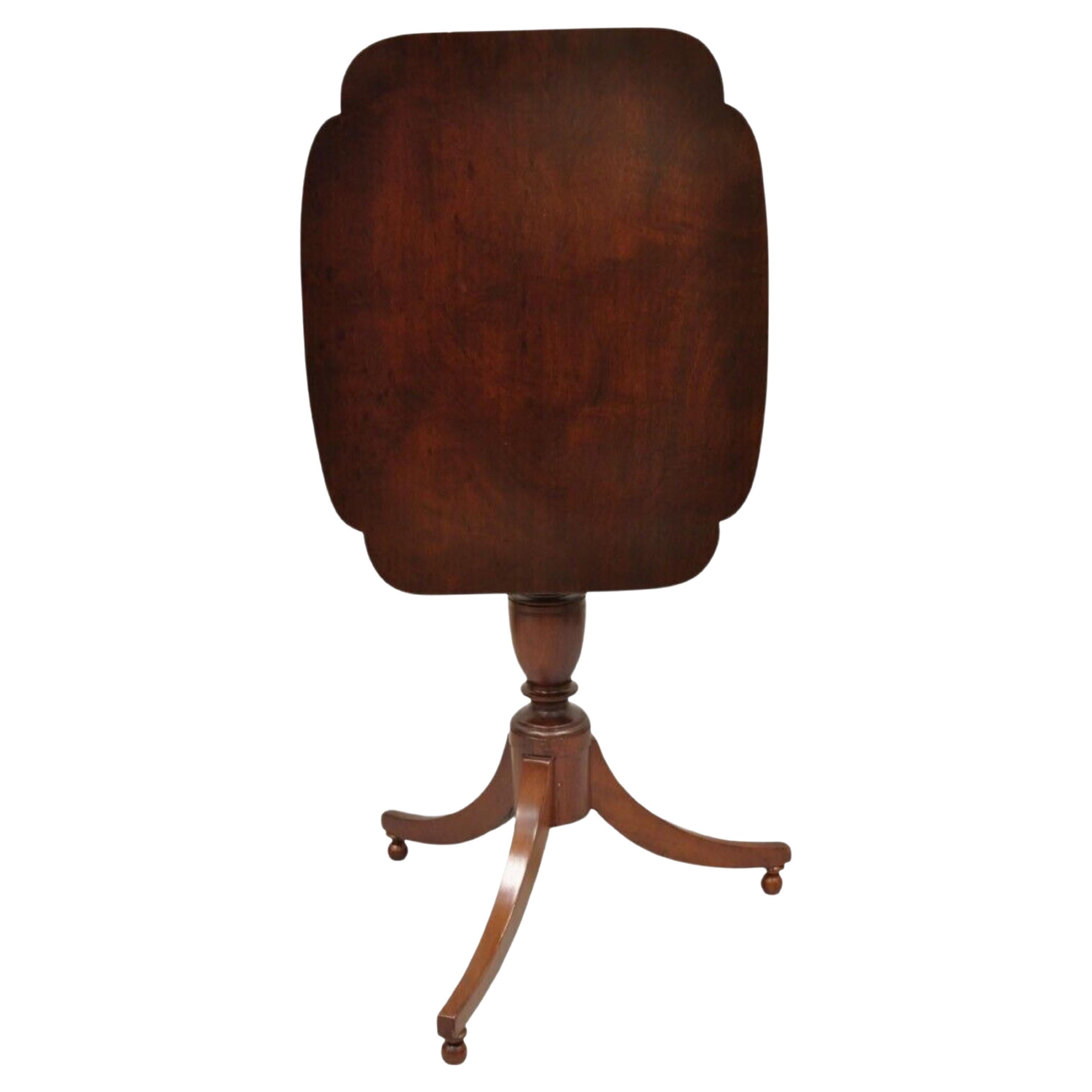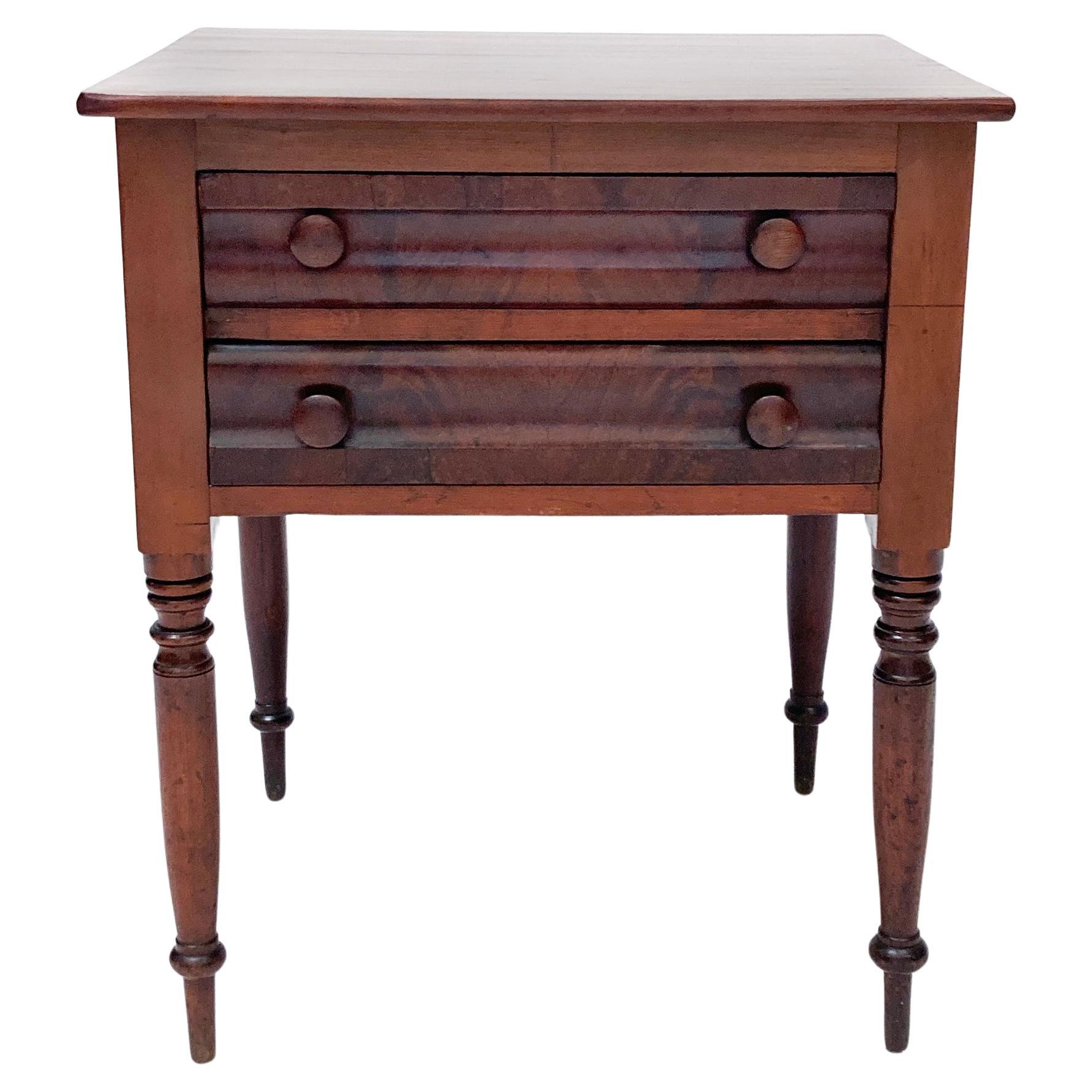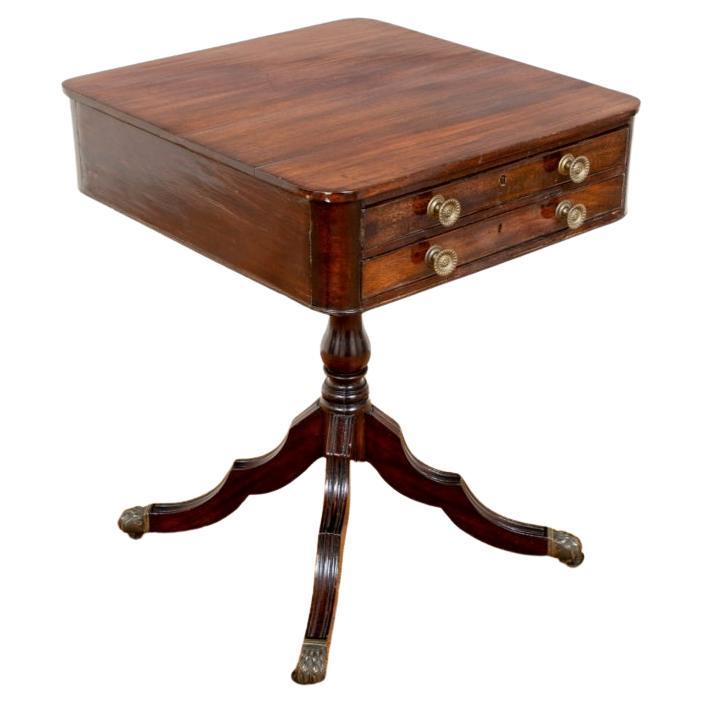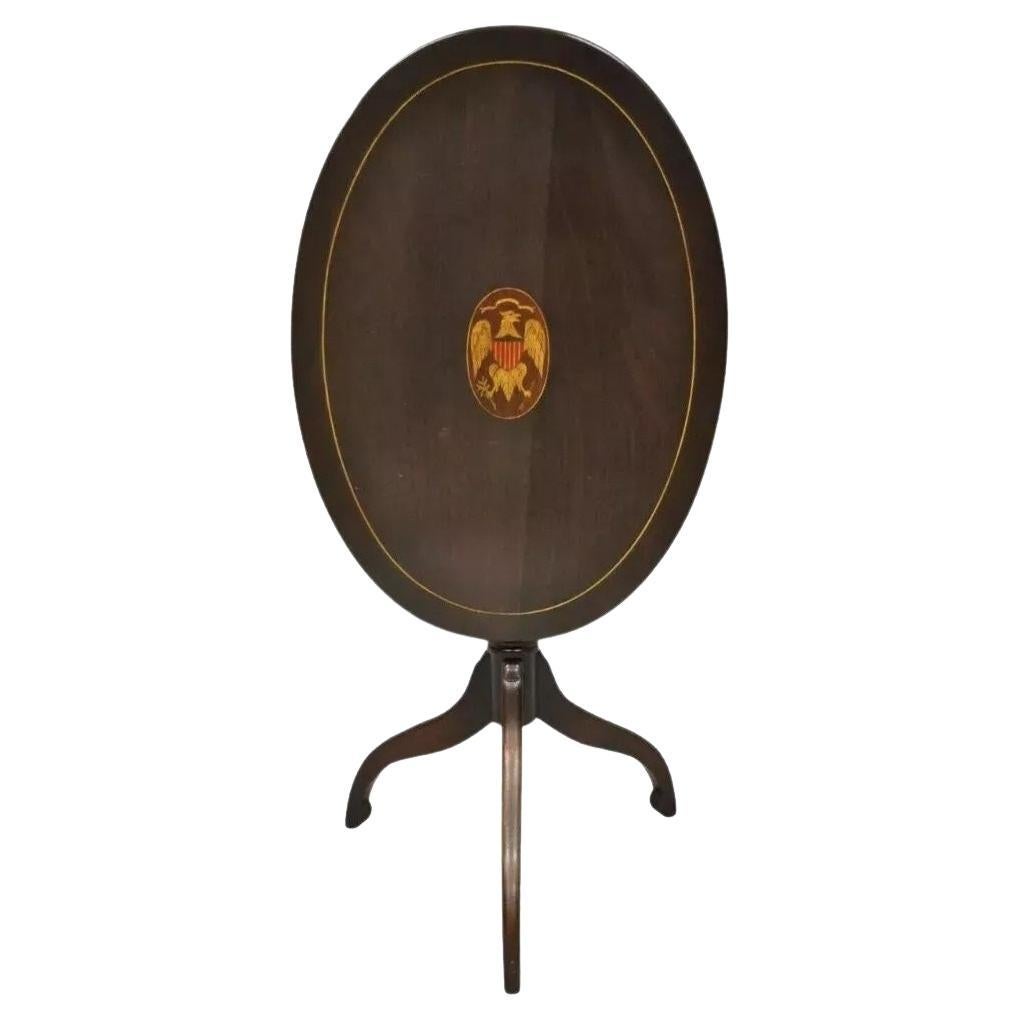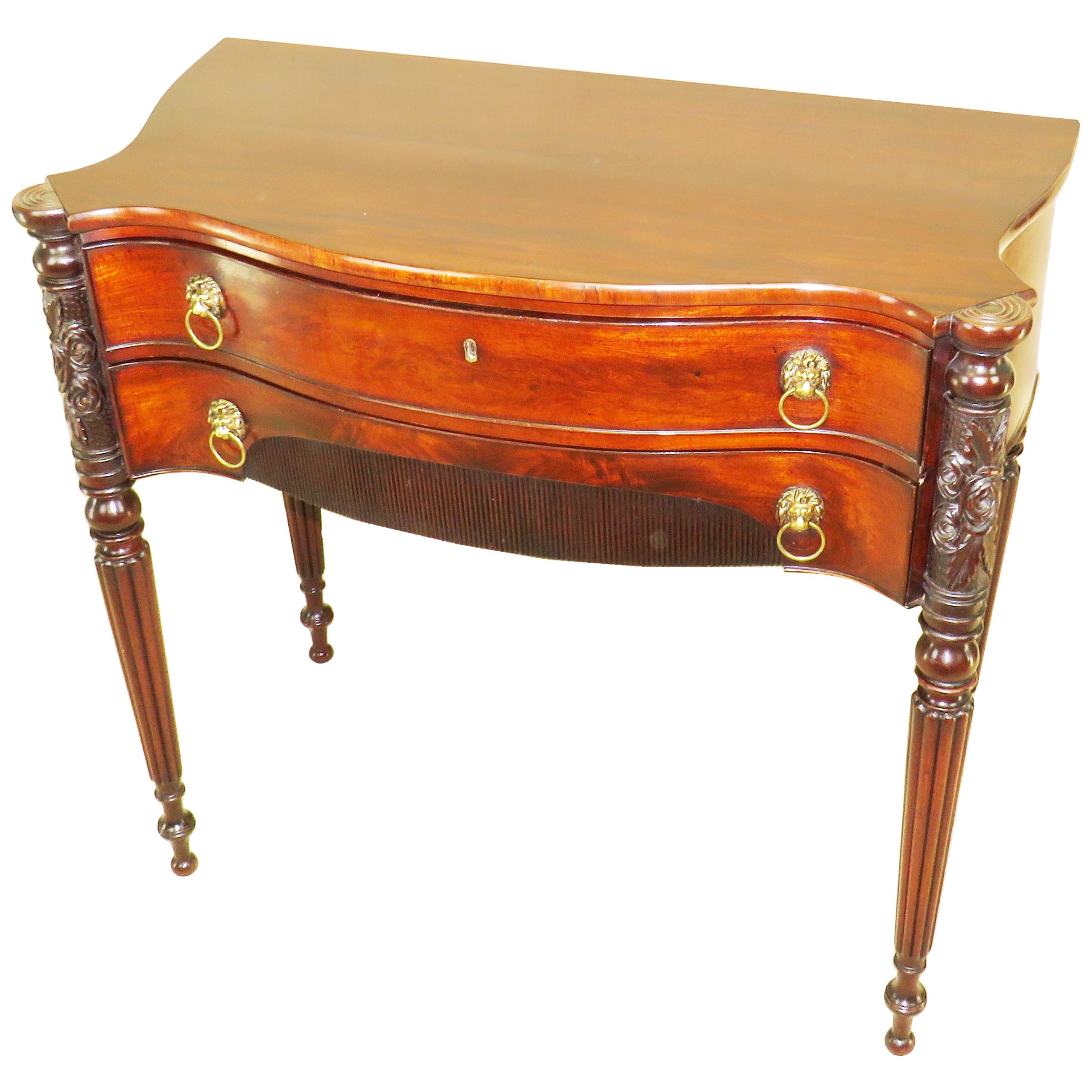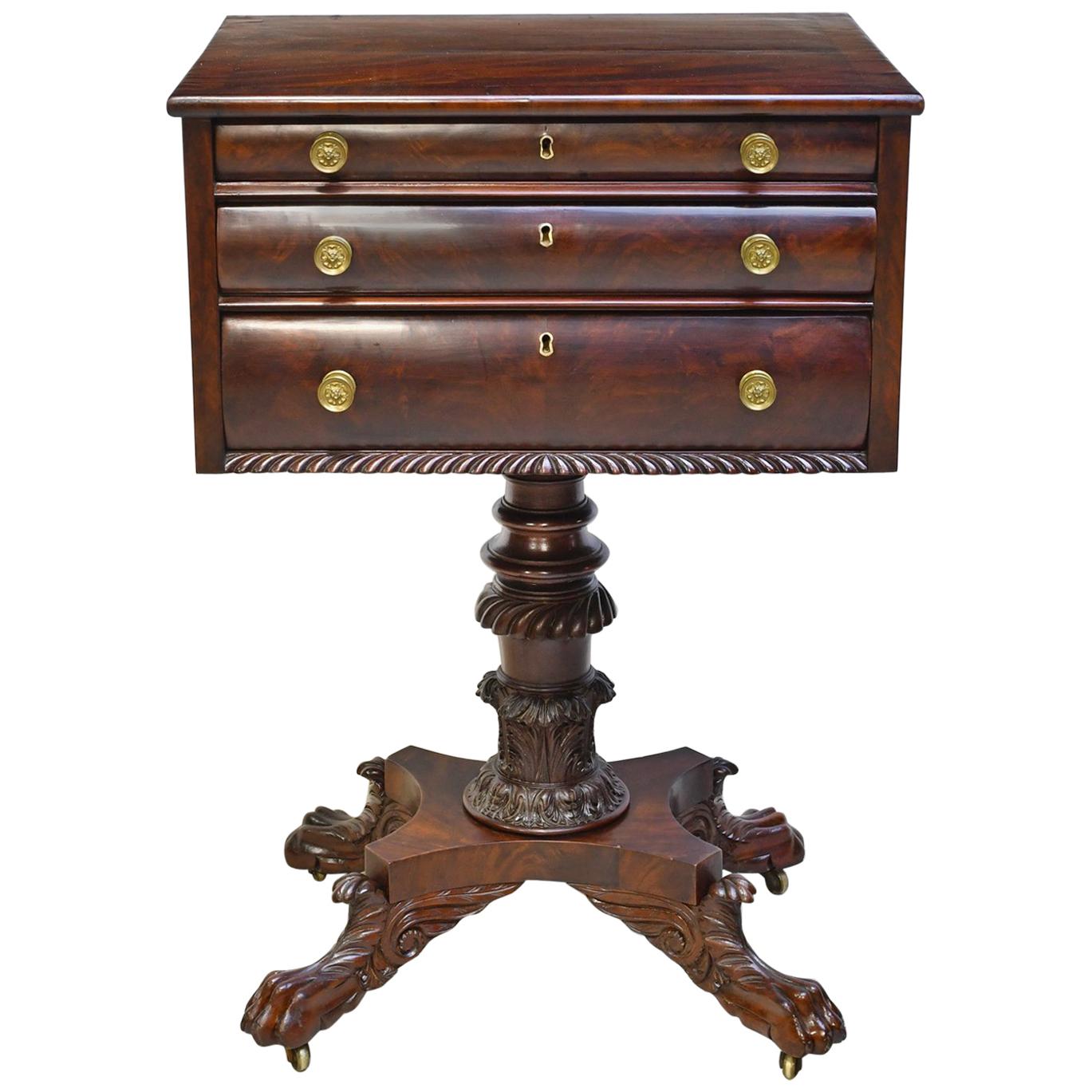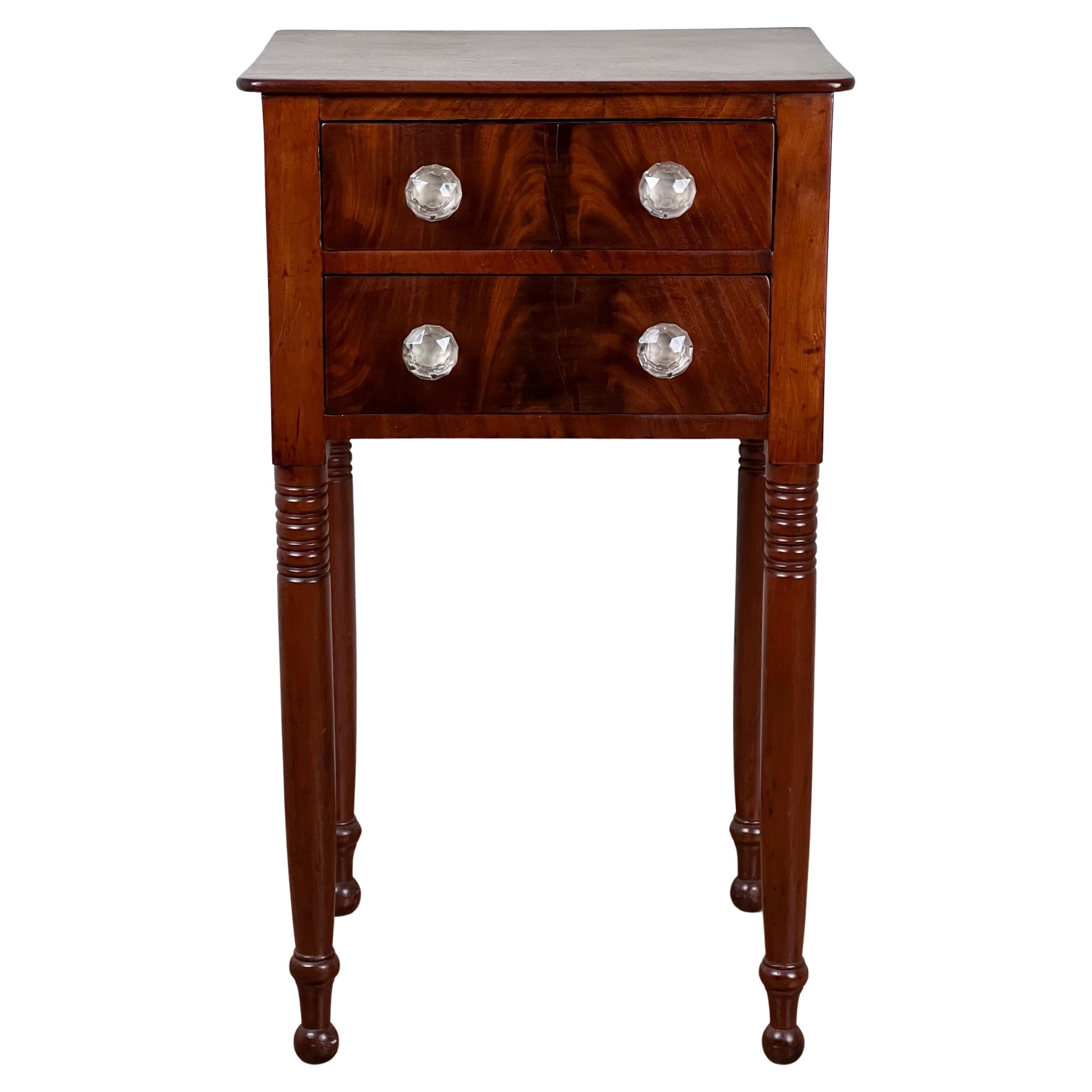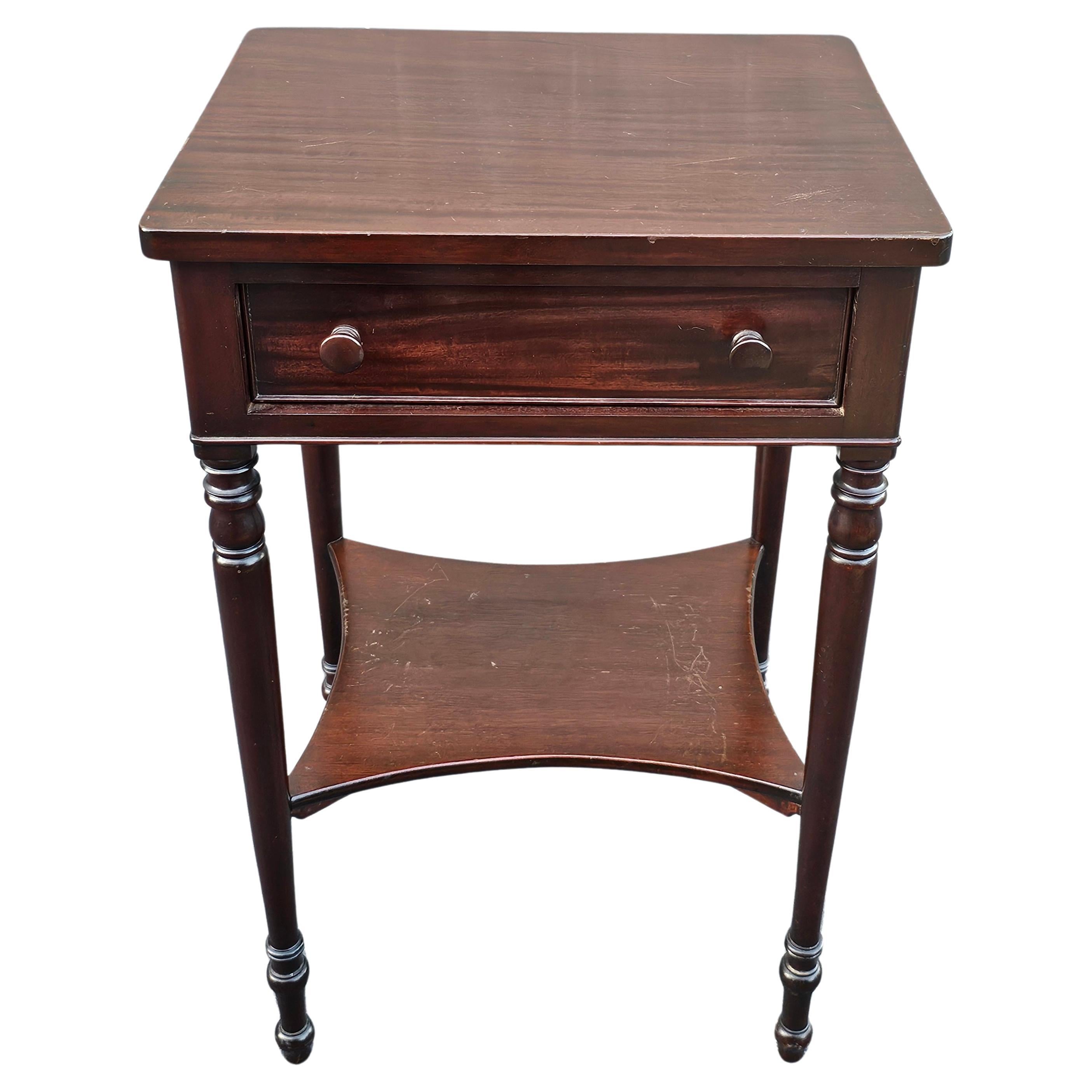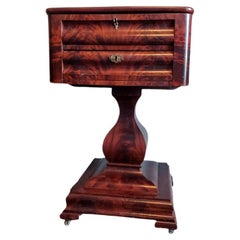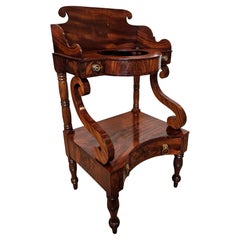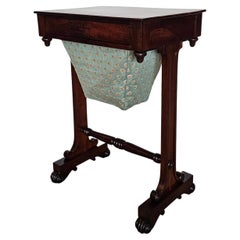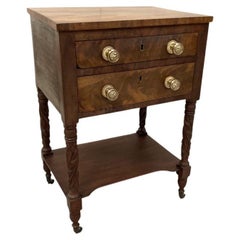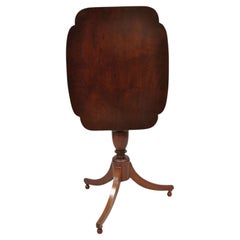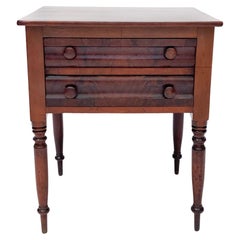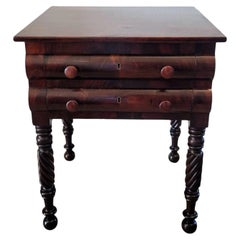
Antique American Federal Period Sheraton Mahogany Work Table
View Similar Items
Want more images or videos?
Request additional images or videos from the seller
1 of 21
Antique American Federal Period Sheraton Mahogany Work Table
$3,500List Price
About the Item
- Dimensions:Height: 28.5 in (72.39 cm)Width: 24 in (60.96 cm)Depth: 21.5 in (54.61 cm)
- Style:Federal (Of the Period)
- Materials and Techniques:
- Place of Origin:
- Period:
- Date of Manufacture:circa 1820
- Condition:Wear consistent with age and use. Minor losses. Minor fading. Solid, sturdy, stable, and structurally sound. Wear and tear consistent with age and use, including minor imperfections such as to the edge of drawer, light rubbing, and key lost to time.
- Seller Location:Forney, TX
- Reference Number:1stDibs: LU5977227089612
About the Seller
4.8
Platinum Seller
Premium sellers with a 4.7+ rating and 24-hour response times
Established in 2013
1stDibs seller since 2021
290 sales on 1stDibs
Typical response time: 1 hour
Authenticity Guarantee
In the unlikely event there’s an issue with an item’s authenticity, contact us within 1 year for a full refund. DetailsMoney-Back Guarantee
If your item is not as described, is damaged in transit, or does not arrive, contact us within 7 days for a full refund. Details24-Hour Cancellation
You have a 24-hour grace period in which to reconsider your purchase, with no questions asked.Vetted Professional Sellers
Our world-class sellers must adhere to strict standards for service and quality, maintaining the integrity of our listings.Price-Match Guarantee
If you find that a seller listed the same item for a lower price elsewhere, we’ll match it.Trusted Global Delivery
Our best-in-class carrier network provides specialized shipping options worldwide, including custom delivery.More From This Seller
View AllEarly American Classical Empire Period Flame Mahogany Sewing Stand Work Table
Located in Forney, TX
A rare fine quality Federal period American Empire flame mahogany sewing stand work table from the early 19th century.
Exquisitely hand-crafted in the northeastern United States, most likely Philadelphia, Pennsylvania, circa 1820, having a hinged top, opening to reveal contrasting Birdseye maple marquetry oval cartouche inlay, a fitted maple divided compartment interior, the front having two nicely shaped curved drawer fronts, consisting of a faux drawer front over a single dovetailed ogee drawer, above a vasiform pedestal standard, molded stepped platform base, rising on bracket feet, resting on casters.
Attractive highly figured crotch cut swirl mahogany with striking grain patterns, rich and deep antique wood color...
Category
Antique Early 19th Century American Empire Side Tables
Materials
Birdseye Maple, Mahogany
Early American Federal Period Flame Mahogany Antique Wash Stand
Located in Forney, TX
A rare and stunning Federal period (1789-1823) early American flame mahogany wash stand. circa 1810
Exquisitely hand-crafted in the Northeastern United States in the early 19th cent...
Category
Antique Early 19th Century American Federal End Tables
Materials
Brass
Scarce Metamorphic Edwardian Period Mahogany Antique Desk Side Table
Located in Forney, TX
Add a touch of refined elegance and sophistication with this charming rare and unusual petite scale Edwardian era metamorphic ladies correspondence table / sewing work stand. circa 1...
Category
Early 20th Century English Edwardian Side Tables
Materials
Leather, Mahogany
William IV Period English Sewing Stand Work Table
Located in Forney, TX
A scarce nearly 200 year old English William IV Period rosewood and mahogany sewing stand work table with beautifully aged warm rustic patina. circa 1830s
Combining sophisticated e...
Category
Antique Mid-19th Century English William IV Side Tables
Materials
Fabric, Upholstery, Mahogany, Rosewood
Antique Japanese Meiji Period Elaborate Flying Dragon Table
Located in Forney, TX
A magnificent antique Japanese powerfully carved center table with dragons from the Meiji period.
The growth of urban centers and spread of wealth during the Meiji Restoration period in Japan ushered in an era that reveled in the aesthetic qualities of objects and actions in everyday life. This ornately carved figural table from the late 19th century / early 20th century demonstrates the level of pleasure and luxury pursued by the wealthy.
The mythical dragon-inspired shape echoes throughout the elaborately hand carved ebonized hardwood; with an unadorned inset polished circular rich rosewood colored top with attractive wood graining; scalloped border and edge with ornate running ornamentation between; rises over the profusely carved and stylized skirt with carvings of whimsical dragon mask and spread wings in high relief and open scrollwork; raised on four spoon carved...
Category
Early 20th Century Asian Meiji Tables
Materials
Rosewood
Early 19th Century American Sheraton Mahogany Campaign Officers Desk
Located in Forney, TX
A rare and most unusual Federal period mahogany campaign field desk from the early 19th century. Believed to have been used as a maritime sea capta...
Category
Antique Early 19th Century American Federal Desks and Writing Tables
Materials
Cherry, Mahogany, Poplar
You May Also Like
Antique Federal Mahogany Work Table for Restoration
Located in Bridgeport, CT
An antique Federal mahogany worktable with lower tier, two drawers with later brass pulls with Lion motif, well carved spiral twist legs and the whole resting upon brass casters. Lac...
Category
Antique 19th Century Federal Side Tables
Materials
Brass
Antique Mahogany Tilt Top Federal Sheraton Pedestal Base Side Tea Table
Located in Philadelphia, PA
Antique Mahogany Tilt Top Federal Sheraton Pedestal Base Side Tea Table. Circa 19th Century. Measurements: (Flat): 29.5" H x 24" W x 19.75" D (Top).
Category
Antique 19th Century Federal Side Tables
Materials
Mahogany
American Mahogany Federal Work Table with Barley Twist Legs on Casters, C. 1810
Located in Charleston, SC
American mahogany Federal two drawer hinged work table with a ratcheted white pine writing surface, fitted interior for ink wells, original brass sandwich glass knobs, lower connecti...
Category
Antique 1810s American Federal Side Tables
Materials
Brass
1800's American Federal Period 2 Drawer Side Table
Located in Louisville, KY
This gorgeous American Federal period table is a beautiful reflection of the early 1800's. With hand turned legs, unique irregular lines ...
Category
Antique Mid-19th Century Federal Side Tables
Materials
Mahogany
Antique Federal Sheraton Mahogany Eagle Shield Flag Inlay Tilt Top Lamp Table
Located in Philadelphia, PA
Antique Federal Sheraton Mahogany Eagle Shield Flag Inlay Tilt Top Lamp Table. Item features an inlaid central Eagle with shield and flag, tilt top, inlaid, solid wood construction, ...
Category
Early 20th Century Unknown Federal Side Tables
Materials
Mahogany
Antique Federal Style Mahogany Two Drawer Work Stand
Located in Bridgeport, CT
Antique Federal style mahogany end table with two shallow working drawers on front and faux drawers on verso, each with two brass kno...
Category
Antique 19th Century Federal Side Tables
Materials
Brass
Recently Viewed
View AllMore Ways To Browse
Antique Bed Lamp
Antique Federal Card Table
Single Mahogany Bed
American Carved Bed 19th Century
Mahogany Sheraton Card Table
Adams Side Table
Antique Empire Card Table
Mahogany Parlor Table
Sheraton Sofa Antique
Antique Federal Lamps
Englishmans Antiques
Flame Mahogany Bed
Parlor Cabinet
Two Drawer Sheraton Side Table
American Federal Card Table
American Federal Sheraton
Rope Beds Antique
Roman Thomas Chairs
